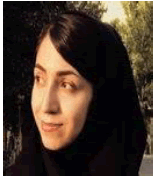Keynote Forum
Yu Chen
ChinaTitle: Comparison of anterior controllable antedisplacement and fusion (ACAF) with posterior laminoplasty in the treatment of multilevel cervical ossification of the posterior longitudinal ligament: a prospective, randomized and control study with at least one-y
Abstract:
The optimal approach for the treatment of ossification of the posterior longitudinal ligament (OPLL) in the cervical spine still remains controversial. Both anterior and posterior approaches have their advantages and disadvantages. We have developed a novel technique for this disease, called anterior controllable antidisplacement and fusion (ACAF). The study is to compare ACAF with laminoplasty in the treatment of multilevel OPLL, and evaluate the efficacy and safety of this procedure. Between September 2016 and April 2018, a total of 80 patients with multilevel OPLL were randomized in a 1:1 ratio to ACAF group and laminoplasty group. All patients were followed up at least one year. The results showed ACAF took a longer operation time. C5 palsy and axial pain occurred more commonly in laminoplasty group, whereas dysphagia and hoarseness appeared easily in ACAF group. At one-year follow-up, the final JOA score and RR were significant higher in ACAF group than those in laminoplasty group, when OR was not less than 60%, or K-line was negative. ACAF was also good at preservation of cervical lordosis and sagittal balance, but ROM of cervical spine in both groups decreased significantly. Therefore, ACAF is a safe and effective alternative for multilevel OPLL. Compared with laminoplasty, ACAF is more effective in the cases when OR is not less than 60%, or K-line is negative.
Biography:
Yu Chen has completed his PhD at the age of 29 years from Second Military Medical University and work as a spine surgeon in Changzheng Hospital. He is a professor of spine surgery, and perform more 500 spine operations each year. He has published more than 30 papers in reputed journals such as Spine, Eur Spine J, Bone and etc.
Godard E Artajos
PhilippinesTitle: High Cervical Disc Herniation (C3-C4) With Superimposed Myasthenia Gravis In A 38-year Old Female: A Case Report
Abstract:
Myasthenia gravis and High cervical disc herniation are uncommon diseases and rarely occurs at the same time.[3,4] Each condition is caused by different etiologies and pathophysiology. We report a case of a 38-year old Filipino female who was admitted due to head drop. She experienced bowel and bladder incontinence and progressive proximal muscle weakness for nine months and eventually developed cranial muscle symptoms like dysphagia, dysphonia and ptosis. She was admitted as a case of cervical spine spondylosis but worsened after physical therapy despite IV steroids. Positive prostigmine test and repetitive nerve stimulation test confirmed presence of concomitant Myasthenia Gravis. In conclusion, we describe here a case of high cervical cord compression with superimposed myasthenia gravis. That the pattern of weakness caused by the spinal cord lesion can hide the classic fatigable pattern of weakness in myasthenia gravis. The presence of cranial muscle involvement and worsening of weakness after physical therapy favors myasthenia gravis. Early diagnosis of concurrent myasthenia and initiation of proper treatment helps in preventing possible complications that can prolong hospitalization in patients with high cervical cord compression.
Biography:
Godard E. Artajos, MD has completed his medical degree at age 26 years from the University of Santo Tomas Faculty of Medicine and Surgery. He is currently a Senior Resident-in-Training under the Adult Neurology Program of the East Avenue Medical Center Department of Neurosciences, a tertiary government hospital in the heart of the Philippines. He aspires to pursue Neurophysiology Fellowship abroad and go back to serve the Filipino people.
Vahideh Nasr
IranTitle: Allogenic Mesenchymal Stem cell Therapy for CADASIL patient: first clinical Case Report
Abstract:
CADASIL, Cerebral Autosomal Dominant Arteriopathy with Subcortical Infarcts and Leukoencephalopathy, is an inherited small vessels disease that characterized by central nervous system dysfunctions caused by mutations in the Notch-3 gene. Clinical manifestations accrue due to brain’s vasculopathy, neurodegeneration, and immune system reaction. We describe here an effective method for treatment of CADASIL by using mesenchymal stem cell therapy. A CADASIL case, 36 years old man, neuroimaging and genetic analysis for Notch-3 confirmed the diagnosis, is reported. In the present case, two stem cell injections have been performed at intervals of three weeks. The patient had no significant complications in the post-transplant period. No immediate or delayed side effects following MSC infusion were observed. He developed neither malignancy nor unwanted cells or any infectious complications 18 months after the transplantation, we performed a Cerebral MRI showed stable cerebral lesions and his gate and balance improved. Anti-HLA Antibody measurement confirmed that the patient's immune system was not stimulated by injected cells.With regard to his neurological symptoms, Scale for the assessment and rating of ataxia (SARA), The Multiple Sclerosis Functional Composite measure (MSFC), Quality of Life Assessment (QOL), and Cognitive Functioning Status (ACE-R), the patient did not has further deterioration of his previous clinical status in the follow up period of 18 months.
Further studies need to be performed to show the generalizability of the results.
Biography:
Professor Madana Mohiuddin Bonab, pioneer of stem cell Therapy application in the treatment of MS, is one of the authors of this study. She is the best technologist awarded in 13th, Anniversary meeting of Pardis Technology Park in 2015 and Co-author of “Multiple Sclerosis A Mechanistic view“ , “Neuroinflammatiom“ and “The neurobiology of multiple sclerosis“ (Elsevier).



